Innovazione e produttori di difesa ucraini
November 05, 2025
Di Roy Gardiner

In September 2025 a delegation from Defense Tech for Ukraine (DTU) traveled to Ukraine to meet with defense manufacturers and international investors.
Two conferences in the beautiful city of Lviv, Defense Tech Valley and IT Arena, gave the dozen delegates a great opportunity to talk with many Ukrainian defense manufacturers in person.
This blog briefly describes a cross sample of these that were particularly interesting with regards to the Ukrainian capacity for practical innovation, ranging from small startups to well established manufacturers.

Ukrainian Defense Manufacturers
DevDroid produces the “Maul EVAC” UGV, an armored compartment for evacuating wounded that provides protection from fragmentation from FPV warheads and artillery.
A gasoline engine provides speeds of 50 km/hr for rapid recovery of wounded.
The original chassis was created by soldiers of the 1st Independent Medical Battalion, but it has been licensed to this experienced Ukrainian defense manufacturer.
https://devdroid.tech/en/
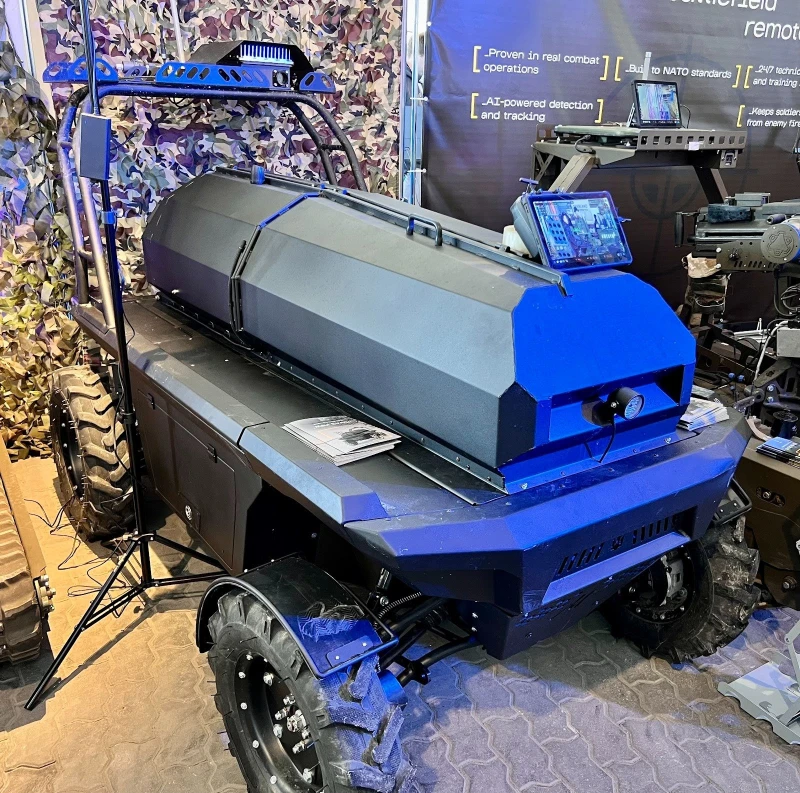
MAC Demining Systems’ “SCORP 1” flail mine clearer UGV is equipped with both radio and Starlink communications, and can operate autonomously or by remote control.
MAC Demining Systems is a division of Military Armored Company Hub, that unites Ukrainian developers with manufacturers to achieve serial production of military equipment.
https://vpk-mac.com/en/
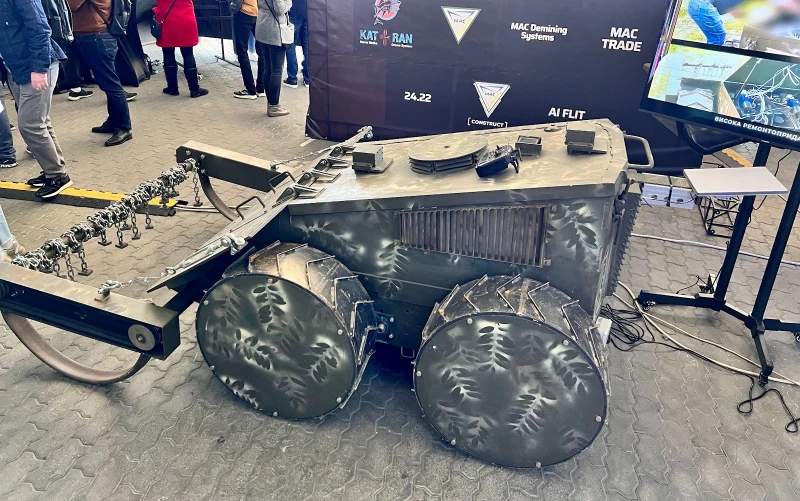
KVERTUS continues to produce some of the most advanced and effective electronic warfare devices in the world. In 2014, founder Andrii Znaichenko saw military drones in action, and realized the necessity of counteracting their destructive effects. KVERTUS was established in 2017, and now fabricates 40 different EW products with a total production rate of 5000 devices a month.
https://kvertus.ua/en/

Varta produces the “Drone Hunter” multi-barrel drone shotgun system for destroying Russian fixed wing and quadcopter reconnaissance and bomber drones. A specialized cartridge featuring electric ignition is used, and the system mounts on a wide range of FPV sizes. The four-barrel interceptor can give a denser shot pattern or keep reserves for a second attack if necessary.
https://vartadrone.com/
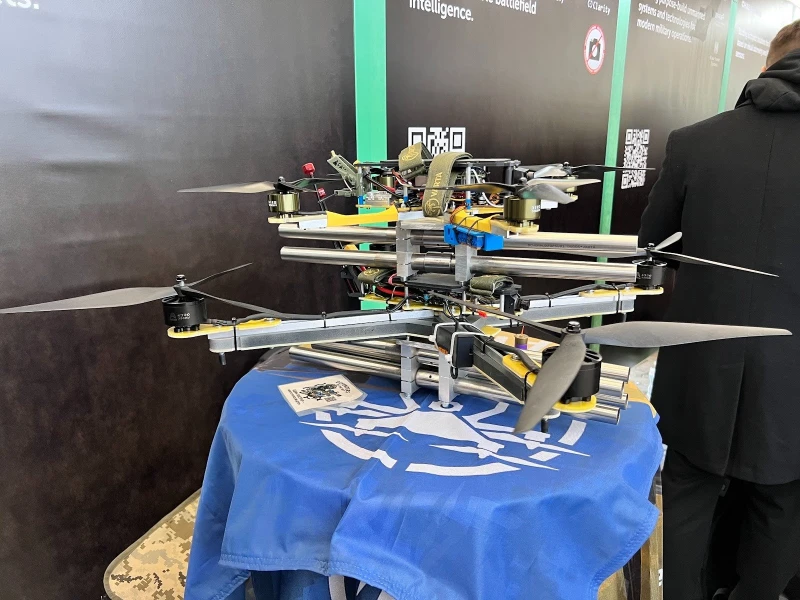
Ground Robotics introduced the “Vatag” heavy armored combat UGV at Defense Tech Valley. Vatag was displayed with a 25 mm Bushmaster cannon, and is the heaviest Ukrainian UGV developed so far. It can be fitted with other combat systems, and can operate autonomously on some missions using machine vision for navigation.
https://www.groundrobotics.tech/
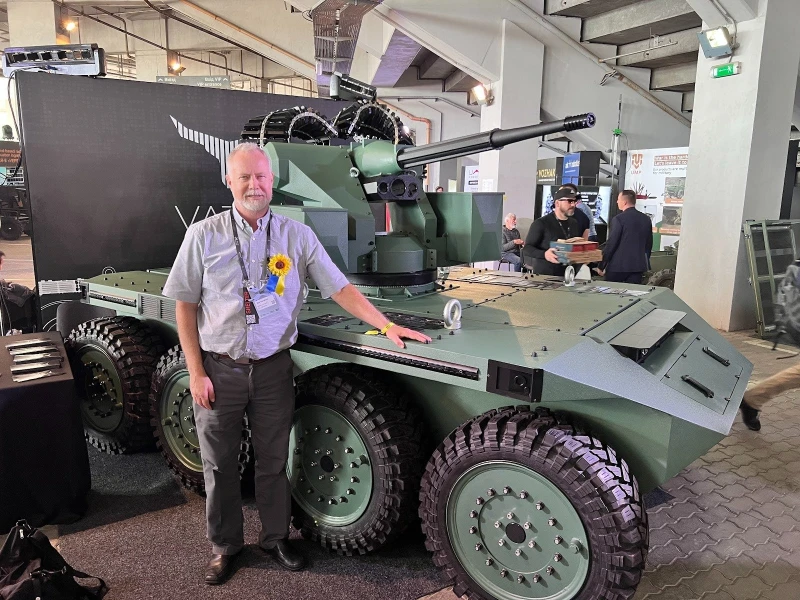
Black Forest Systems has already received funding for a safety system for FPV warheads, and is seeking more investment to produce their drone system intended for small frontline infantry units. Flying the console-controlled drone does not require the considerable training and experience that flying an FPV does. To keep costs to a minimum the range of the drone is limited to a few kilometers, reflecting the needs of the intended user.
https://blackforestsystems.com/
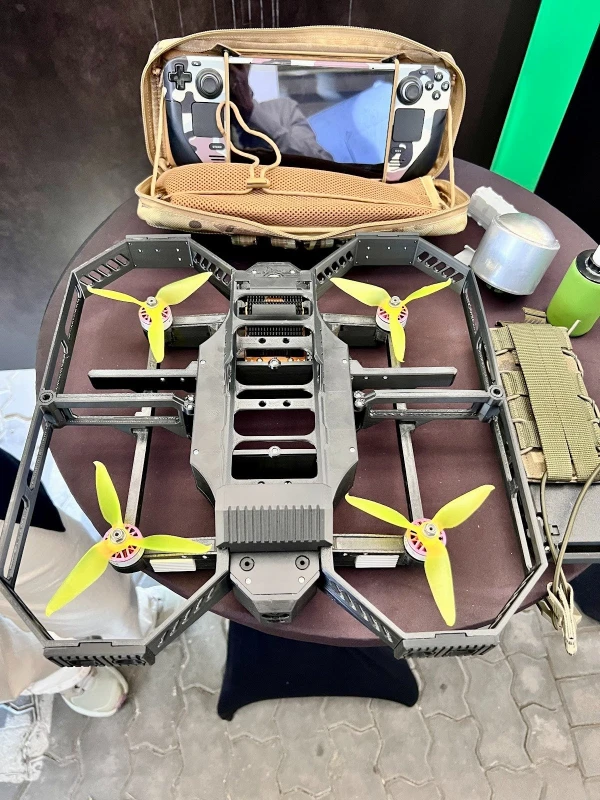
Startup CHAS Systems has developed a communications system for UGVs that includes an onboard partial autonomy function.
This capability keeps the vehicle moving if the control link is lost until communication is reestablished. It also assists the operator with obstacle avoidance while driving. The system supports frequency-hopping radio control as well as Starlink, with LTE mobile network modem available as a backup option.
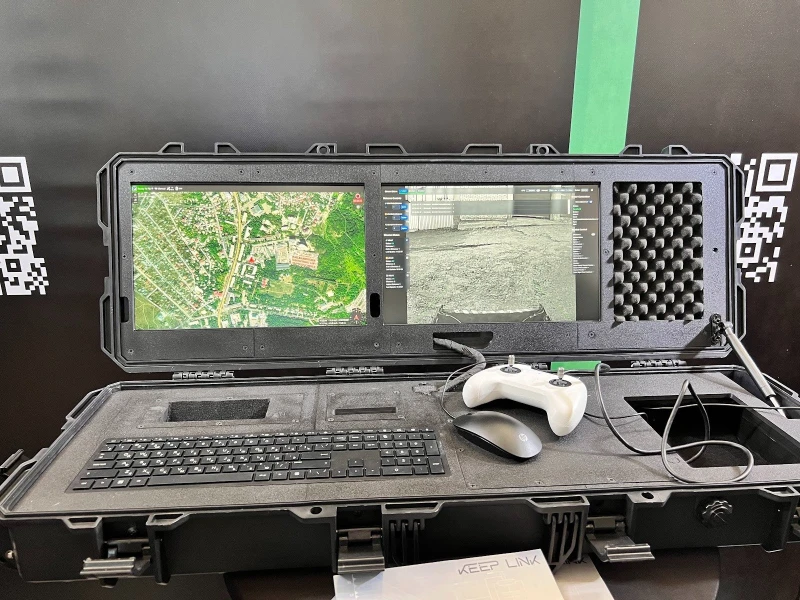
Another Ukrainian startup is Trident Technologies that produces the small modular “Minosaur” UGV. The basic block of two-wheeled components with electric motors are connected by a swivel suspension, and can be linked together in a chain for heavier tasks.
https://trident-tech.co/en

Ixian is a small team of engineers that has successfully produced the “Nokta” fixed-wing kamikaze UAV with a jam-resistant 3-channel control system. More recently developed is the “Molly”, a VTOL (Vertical-TakeOff-and-Landing) reconnaissance UAV.
https://ixian.com.ua/en/

Piranha Tech is a domestic developer and manufacturer of electronic warfare systems that has been in operation since 2014. They focus on active jamming of drones and UAVs by suppressing control communications. They have sold their systems to more than 25 countries around the world.
https://piranha-tech.com/en/

As the name suggests, Rovertech develops and manufactures UGVs. The military chassis can also be adapted to the civilian market, as seen in the “Fire Serpent” water distribution robotic vehicle for firefighting. Such broader applications are a big plus for attracting foreign investment. https://rovertech.co.ua/
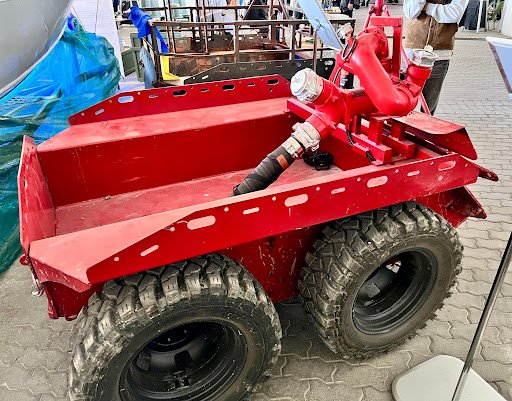
Zmiyar has developed a radio communication system with modified magnetic-influence fuzes for TM-62 and PTM-3 anti-tank landmines. Up to 200 landmines can be controlled simultaneously from a single controller, allowing command detonation or deactivation. Non-standard control frequencies are used to avoid electronic warfare jamming. After the IT Arena 2025 tech conference, MITS Capital announced it was investing $1 million into five defense startups including Zmiyar.
https://zmiyar.com/
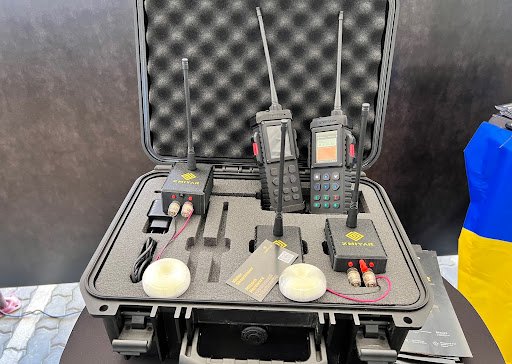
Armor is a group of 15 engineers, product designers, and military experts who gathered in 2015 to help the Ukrainian military fight the Russian invaders. Their main product is the “Module 1” tablet-based ballistic calculation system for all types of artillery including rocket launchers, as well as armored vehicles, grenade launchers and machine guns.
https://zmiyar.com/
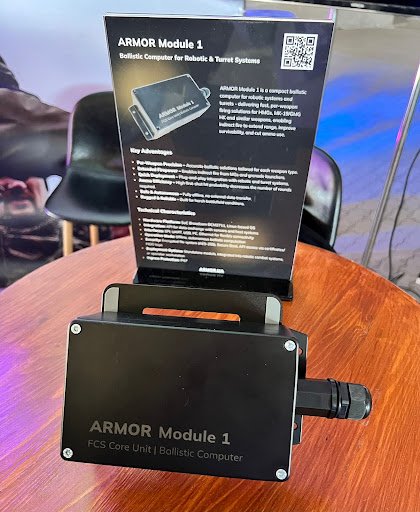
Toloka had the most dramatic unveiling in Lviv, the massive underwater drone “TLK-1000.” The 12-meter-long drone is reported to carry a warhead weighing up to 5,000 kg over distances of up to 2,000 km.
It’s developers claim that for autonomous operations it has “four integrated neural networks—optical, thermal, acoustic and inertial.”
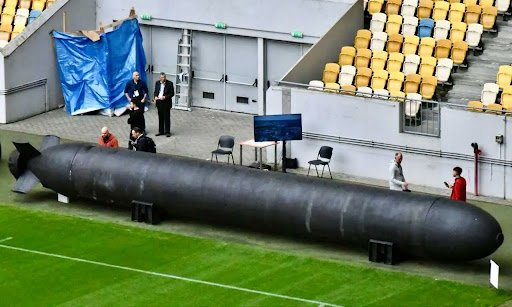
A young team at the startup Kray has designed and developed a magnetic-influence fuze for anti-vehicle landmines like the TM-62 and PTM-3. The landmines are placed by drones on Russian-controlled roads. The new fuze is inspired by a very successful Ukrainian fuze called “Jonik” (Johnny) which the Russians have learned to fear and hate, but which is produced by Chinese commercial sources. Kray’s device is a domestic solution with no Chinese components, and since it has received rigorous testing will likely prove more reliable than the “Jonik” fuze.
https://kray.in.ua/
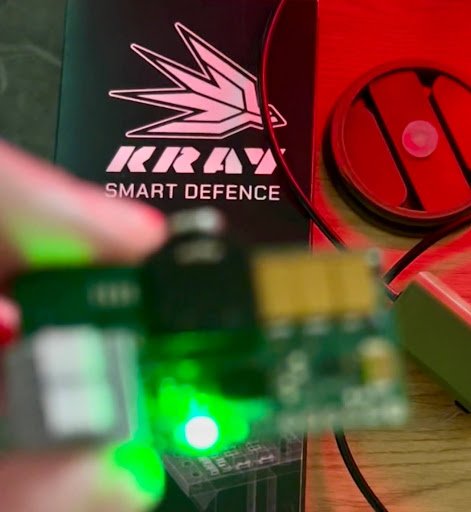
Ukraine has been strongly criticized for not mobilizing its 20-24 year old cohort, but has insisted on preserving these young people for the nation’s future. Kray in particular exemplifies the success of this strategy, as its young team members contribute most effectively to the war effort by creating innovative startups like this one. In these Ukrainian companies alongside brilliant youngsters are combat veterans with PhDs from the country’s best universities, with skilled technicians and also some highly experienced greybeards.
The biggest problem is lack of funding .
Domestic capital is scarce, and there are bureaucratic barriers to international investment that are a priority for the government to solve. To learn more about these profiled defense manufacturers and how western investors can strengthen Ukraine and NATO’s defenses while receiving significant returns, contact DTU’s investment facilitation team at invest@defensetechforukraine.org
Roy Gardiner is OSINT Technical Lead focusing on the drone war in Ukraine, a member of the Executive Committee with Defense Tech for Ukraine, and a former officer in the Canadian Armed Forces.
Follow his regular OSINT analyses on his X account @GrandpaRoy2
È responsabile tecnico OSINT e membro del comitato esecutivo di Defense Tech per l'Ucraina.


